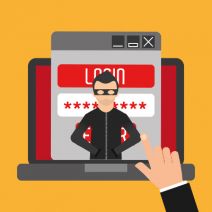Directive Blogs
 For sites you need to log into often, having your browser remember your password can save you time logging in, especially if you are using secure passwords that you might need to look up otherwise. There are circumstances where you might want to manage what personal information gets stored in your web browser.
For sites you need to log into often, having your browser remember your password can save you time logging in, especially if you are using secure passwords that you might need to look up otherwise. There are circumstances where you might want to manage what personal information gets stored in your web browser.
Ever since the mid-1990s employees have been taking advantage of personal gadgets to help them get work done faster. Remember the PDAs and Palm Pilots from a decade and a half ago? Even though many companies weren't quick to establish policies to protect corporate data, tech savvy users were able to sync contacts, schedules, email, and company files to their mobile device. These days, mobile devices are in the hands of many more users, but there are ways to provide security without sacrificing your employees rights to their personal device.
On the topic of identity theft, social media accounts are becoming a high target for hackers, especially for spreading malicious viruses. To some, losing control over their Facebook or Twitter accounts could be just as devastating as having their credit card stolen. Trouble is, for many users, having one login account stolen means hackers have access to their other accounts too.
 In order to best serve their clients, companies need to have a comprehensive program in place to help them defend their systems from malware attacks on their company's infrastructure. These attacks can have a devastating effect on a business's continuity, so having an appreciation for exactly what types of adversaries your company is up against is important. There are several types of potential intruders that you should be aware of.
In order to best serve their clients, companies need to have a comprehensive program in place to help them defend their systems from malware attacks on their company's infrastructure. These attacks can have a devastating effect on a business's continuity, so having an appreciation for exactly what types of adversaries your company is up against is important. There are several types of potential intruders that you should be aware of.
Internet privacy is no new issue. Between malicious hackers trying to breach private information, governments trying to regulate it, and organizations trying to track as many metrics as they can, the Internet continues to chug along for the most part just fine. Are YOU concerned about Internet privacy?
Does it seem like every day your network is suffering from a different issue? How about the same old issues that keep coming back? Think about how much time is wasted every day while you and your employees have to cope with viruses, malware, and oddball technology issues. What if we told you there is an easy solution that will eliminate 99% of these problems?
 Nature can be pretty impressive. It can interrupt the day-to-day operations of businesses, cause major damage, and cost your business in expensive downtime. Having a good business continuity plan (and ensuring you have it set in place) can make or break your company when mother nature comes knocking at your door.
Nature can be pretty impressive. It can interrupt the day-to-day operations of businesses, cause major damage, and cost your business in expensive downtime. Having a good business continuity plan (and ensuring you have it set in place) can make or break your company when mother nature comes knocking at your door.
We can never stress enough to our clients how important their data is. There are plenty of ways data can become lost, but the one scenario that nobody ever likes to talk about is internal data theft. That's right; businesses can suffer from their own employees stealing data. Now, this doesn't mean that all or any part of your staff is plotting to expose company secrets or distribute your leads to competitors, but a few precautions can be taken to just ensure that it never happens.
 Computer viruses are pretty serious threats, and can cause huge expensive issues for businesses. Many cases of malware and computer viruses actually use your computer to commit real crimes. The FBI states that hundreds of thousands of people will likely lose the ability to surf the web if they have a particular piece of malware.
Computer viruses are pretty serious threats, and can cause huge expensive issues for businesses. Many cases of malware and computer viruses actually use your computer to commit real crimes. The FBI states that hundreds of thousands of people will likely lose the ability to surf the web if they have a particular piece of malware.
Let's get theoretical here. Let's say your friend Hank suffers from chest pain. It could be nothing, but chest pain isn't something you want to mess around with, so you suggest that Hank goes to a doctor to get it checked out. There are certain things in life you don't just let happen without getting an assessment to make sure they don't turn into bigger issues, right? Your business's IT security is one of those things.
2011 has been a busy year for security experts worldwide. Major corporations have been reporting harmful attacks by hackers. So far, technology news site CNET has reported over 80 known major hacks since March that have been publicized. The publication of these hacks is inevitable, especially when user-data, contact information, and credit card information is at risk, and that publication can easily cause a PR disaster which can take loads of time and money to rectify (and in some cases, just can't be rectified). The big questions are who is at risk, are Upstate New York small businesses at risk, and what kinds of IT solutions need to be deployed to prevent data-theft and other intrusions.
 Android users may have some cause for concern. Considering its surging popularity, there is going to be a certain amount of rouge applications and other malware that targets the top iPhone OS. According to the popular anti-virus maker, Trend Micro, there are at least 20,000 applications that are malicious that target Google's Android OS. That is an increase of at least 400% since the beginning of 2012. By Christmas of this year, experts have given a conservative estimate that puts potential malware and rouge apps at around 150,000 different applications.
Android users may have some cause for concern. Considering its surging popularity, there is going to be a certain amount of rouge applications and other malware that targets the top iPhone OS. According to the popular anti-virus maker, Trend Micro, there are at least 20,000 applications that are malicious that target Google's Android OS. That is an increase of at least 400% since the beginning of 2012. By Christmas of this year, experts have given a conservative estimate that puts potential malware and rouge apps at around 150,000 different applications.
As you may know, Sony's online gaming service, the Playstation Network, has been getting a lot of media coverage lately due to a major attack by hackers last month. Sony is a massive global company with billions of dollars and stockholders and spans multiple industries, but even a giant can teach us all a lesson that relates to our comparably small-fry organizations.
 Having strong passwords for your online accounts is very important, but sometimes you may want a little more protection in the event your password gets stolen or someone forces their way through it. If you use Google's Gmail service, you can set up your account, then you will need two forms of authentication to get into your email.
Having strong passwords for your online accounts is very important, but sometimes you may want a little more protection in the event your password gets stolen or someone forces their way through it. If you use Google's Gmail service, you can set up your account, then you will need two forms of authentication to get into your email.
Did you know? Microsoft reported in May that every one in 14 downloads from the Internet may now contain malware code. Keeping your business protected is extremely important. Fortunately there are plenty of tools out there that do most of the protecting for you, but these tools need to be managed and kept up to date.
The Internet of Things means a lot more than just enhanced connectivity. In particular, you’ll have a considerable security risk associated with the Internet of Things. It’s clear that the more devices accessing a network, the more risk will be associated with that network, which is where the inherent risk of the Internet of Things comes into play. How can you control the number of devices accessing your network, and thus secure your business from the Internet of Things?
Is your organization using the latest technology solutions? If so, that’s great--you’ve taken the first step toward achieving maximum productivity and efficiency. However, you need to realize that no technology solution comes without its quirks that need to be addressed. Here are two ways that your new technology solutions could potentially be putting your business’s infrastructure at risk.
Security has never been easy for any business that deals with sensitive information. Nowadays, even a small business that uses an Internet connection has to worry about hackers and malware of all types. This is especially problematic for small healthcare offices that need to keep sensitive information secure and safe from online threats.
One of the biggest benefits to the modern business is the scope and breadth of the Internet that connects them with potential and current clients and allows them to communicate their goods and services. This scope and breadth are also one of its biggest pitfalls, as there is plenty of room for the multitude of threats and other potential issues to reside as they menace businesses everywhere.
How big a role does security play in your business’s network management? If it takes a secondary role more in favor of operations, you might want to reconsider why this is the case. After all, your organization’s critical assets--namely sensitive data like employee information, payment credentials, and usernames or passwords--all hold immense risk for exploitation from hackers. Therefore, even if you don’t fear a potential attack, you should at least consider it as a possibility.
In the course of doing business your organization needs to lean on its communications investments. Efficient discourse between vendors, clients, and employees allows for productive action to be made quickly. If you have recently decided to deploy a feature-rich hosted VoIP business phone platform because of its ubiquity, you have to be cognizant of how to best secure your solution. Here are three variables that help you get the most out of your hosted VoIP solution.
Has your business dealt with a phishing attack? If not, consider yourself lucky. There has been a massive spike in phishing attacks as hackers are aggressively going after organizations and the personal identifiable information they hold. These attacks are just not focused on typical businesses either, they are going after organizations that provide public goods. One place that has become a major target for hackers (and phishing attacks) are schools.
With the surge in the number of small and medium businesses that have fallen prey to malware and cyber criminals, there is a lot of focus of what an organization can do to prevent being a victim and how the company should handle themselves after an attack. There is another key factor to preventing cyber criminals from penetrating into your network: your employees.
When a hacker tries to infiltrate your network, they are doing so with a purpose in mind. Usually they are looking for specific information, like account credentials, personal information, or files that can be used to blackmail victims. Regardless, we’ll go over what a hacker can do with the information that they collect from you, and how you can best protect it from them.
Your IT is a central part of your organization’s operations, but its role has changed significantly as business processes have grown more streamlined. There are always shifts and changes in the way that businesses function which must be accounted for, especially in the modern office environment. How have these shifts affected your business’s IT management?
Would you be surprised if we told you that cybercrime is one of the biggest threats to the success of your organization? Unfortunately, there’s no escaping the fact that your business will be under fire from all sides by security threats. One of the most notorious methods includes phishing--email scams that are designed to harvest credentials and other information from unsuspecting users.
Ransomware is a growing problem for businesses, being one of the most difficult threats to remove from an infrastructure. Not only is it easy to spread, but difficult to avoid as a whole. How can your organization prepare for this threat? It starts by being mindful of how ransomware is spread and how your employees react to it, both now and in the future.
Whether you’re just a small business looking to get operations moving in your chosen location, or you’re an enterprise with multiple offices across the country, one thing is universally the same: you need IT support in some capacity. As more technology is added to networks of all sizes and complexities, the need to manage this technology improves. Thankfully, you don’t necessarily have to go at it alone--you have third-party outsourcing at your disposal, which can save you both time and money in the long run.
Social media has been an emerging technology in recent years, and has produced many threats. Hackers have learned that they can take advantage of these communication mediums to launch dangerous new attacks on unsuspecting users. With enough ingenuity on a hacker’s part, they can potentially steal the identity of a social media user. Here are some of the best ways that your organization can combat identity theft through social media.
One of the inevitabilities of working with the cloud is that you have to face a tough question; what kind of compliance requirements are there for cloud-based data? If you’re storing data for your business in a cloud-based environment, it becomes your responsibility to know where and how this data is stored--particularly if you’re not the one doing the actual cloud hosting. How do you maintain compliance when you seemingly have so little control over how your computing platform is managed and maintained?
If you think that working with the cloud doesn’t have risks, think again. It’s inevitable that you’ll face security compliance concerns when it comes to your cloud-based data. If your organization has data stored in a cloud-based environment, you’ll want to pay particularly close attention to how compliance laws affect the way that you access and store this information. How can you make sure that your cloud-based data isn’t in violation of some cloud compliance laws?
With every successful intrusion and theft of data, the images of hackers as criminal masterminds and unstoppable forces of technology gone awry grow. In fact, there’s an increasing narrative that hackers are everywhere, just waiting to use their mad ‘skillz’ to steal your credit card information and buy their limited edition dolls, sorry, “action figures.” Worse, they’re just waiting to hold your data hostage and extort ransom from your business.
 The social media revolution has taken the world by storm, so much in fact that some people are completely at the mercy of their smartphones. However, the dark side of social media, especially Facebook, grows more apparent every day, especially when it comes to both cybersecurity and personal privacy. Are you sure that your Facebook settings aren’t giving away a little too much of your information to the powers that be?
The social media revolution has taken the world by storm, so much in fact that some people are completely at the mercy of their smartphones. However, the dark side of social media, especially Facebook, grows more apparent every day, especially when it comes to both cybersecurity and personal privacy. Are you sure that your Facebook settings aren’t giving away a little too much of your information to the powers that be?
The average business owner may already be aware of what are called phishing attacks - scams that attempt to deceive and trick users into handing over sensitive credentials. However, not all phishing attacks are of the same severity, and some are only interested in hauling in the big catch. These types of attacks are called “whaling,” and are often executed in the business environment under the guise of executive authority.
 Security is a hot-button issue for all types of businesses, but cyber security is such a complex subject that it’s difficult to jam-pack its many intricacies into one blog article. Sometimes understanding just a few ways to improve your business’s security practices can be a significant benefit for your organization.
Security is a hot-button issue for all types of businesses, but cyber security is such a complex subject that it’s difficult to jam-pack its many intricacies into one blog article. Sometimes understanding just a few ways to improve your business’s security practices can be a significant benefit for your organization.
 Hackers have proven that they will do whatever it takes to get to your valuable assets, even if it means taking advantage of physical objects that work alongside a specific frequency. As it turns out, this is exactly how hacking a garage door works, and all it takes is a decade-old communications device to capture the frequency and unlock any garage door that utilizes it.
Hackers have proven that they will do whatever it takes to get to your valuable assets, even if it means taking advantage of physical objects that work alongside a specific frequency. As it turns out, this is exactly how hacking a garage door works, and all it takes is a decade-old communications device to capture the frequency and unlock any garage door that utilizes it.
 Which database management system is running on your company’s server units? For end users, it’s not something that they put a whole lot of thought into. However, if you completely overlook your Microsoft SQL Server, you may end up running an expired version that puts your data at risk. Case in point, SQL Server 2005, which Microsoft recently ended support for.
Which database management system is running on your company’s server units? For end users, it’s not something that they put a whole lot of thought into. However, if you completely overlook your Microsoft SQL Server, you may end up running an expired version that puts your data at risk. Case in point, SQL Server 2005, which Microsoft recently ended support for.
 Hackers have always gone after industries that are profitable, or hold sensitive information that can be lucrative when sold under the table. As such, retailers that accumulate financial credentials are often hit by hacks. The entertainment industry is no different, and hackers continue to grow craftier in their pursuit of wealth and power. Not even Steam, the PC gamer’s most valuable software solution, is safe from the dangers of hacking attacks.
Hackers have always gone after industries that are profitable, or hold sensitive information that can be lucrative when sold under the table. As such, retailers that accumulate financial credentials are often hit by hacks. The entertainment industry is no different, and hackers continue to grow craftier in their pursuit of wealth and power. Not even Steam, the PC gamer’s most valuable software solution, is safe from the dangers of hacking attacks.
 There’s a reason why IT professionals think that the Internet of things is a major security discrepancy. Around 5.5 million new devices are being connected to the Internet every day, and are giving security experts a run for their money. The Internet of Things and its devices could potentially become a security hazard for businesses that aren’t prepared to protect their assets from hacks.
There’s a reason why IT professionals think that the Internet of things is a major security discrepancy. Around 5.5 million new devices are being connected to the Internet every day, and are giving security experts a run for their money. The Internet of Things and its devices could potentially become a security hazard for businesses that aren’t prepared to protect their assets from hacks.
 Businesses today are responsible for keeping the data in their care safe from hackers. There are two kinds of data that a business must protect: the information of their customers, and their own data (eg. company policies and employee information). Which of the two do you think the average business does a better job of protecting?
Businesses today are responsible for keeping the data in their care safe from hackers. There are two kinds of data that a business must protect: the information of their customers, and their own data (eg. company policies and employee information). Which of the two do you think the average business does a better job of protecting?
 Small and medium-sized businesses continue to have problems shoring up their cyber security. Even with the latest solutions, like antivirus and firewalls, they still need to be wary of impending attacks. New threats are created on a daily basis, all of which want to infiltrate your network and cause harm to your business. In fact, 27.3 percent of all malware in the world was created in 2015 alone. Will we ever escape from the clutches of malware?
Small and medium-sized businesses continue to have problems shoring up their cyber security. Even with the latest solutions, like antivirus and firewalls, they still need to be wary of impending attacks. New threats are created on a daily basis, all of which want to infiltrate your network and cause harm to your business. In fact, 27.3 percent of all malware in the world was created in 2015 alone. Will we ever escape from the clutches of malware?
 Firewalls are one of the most common IT security measures on the market today, and for good reason. They act as the first line of defense against any incoming threats, and without them, your organization would have to deal with one data breach after another. Of course, that’s only if you’re taking advantage of a proper firewall; if not, you should seriously consider doing so as soon as possible.
Firewalls are one of the most common IT security measures on the market today, and for good reason. They act as the first line of defense against any incoming threats, and without them, your organization would have to deal with one data breach after another. Of course, that’s only if you’re taking advantage of a proper firewall; if not, you should seriously consider doing so as soon as possible.
 2015 was a brutal year for major corporations, as one by one they fell victim to hacking attacks. Major organizations like Blue Cross Blue Shield, Anthem, and even the United States Office of Personnel became victims of major hacking campaigns. A fact that’s often lost amongst these details is that not all hackers use their skill for evil actions, even if they are still illegal.
2015 was a brutal year for major corporations, as one by one they fell victim to hacking attacks. Major organizations like Blue Cross Blue Shield, Anthem, and even the United States Office of Personnel became victims of major hacking campaigns. A fact that’s often lost amongst these details is that not all hackers use their skill for evil actions, even if they are still illegal.
 We talk about a lot of frightening technology scenarios for businesses; data loss, identity theft, and expensive hardware failures that can inflict substantial downtime and, therefore, cripple the ability of your business to sustain operations. One industry that has changed the way they manage risk, specifically the potential failure of important security systems, is the nuclear power industry. Any business can learn how to mitigate disaster by looking into the specifics of the two most horrendous nuclear meltdowns in history, the meltdown at Chernobyl in 1986, and the tsunami-induced disaster at Fukushima in 2011.
We talk about a lot of frightening technology scenarios for businesses; data loss, identity theft, and expensive hardware failures that can inflict substantial downtime and, therefore, cripple the ability of your business to sustain operations. One industry that has changed the way they manage risk, specifically the potential failure of important security systems, is the nuclear power industry. Any business can learn how to mitigate disaster by looking into the specifics of the two most horrendous nuclear meltdowns in history, the meltdown at Chernobyl in 1986, and the tsunami-induced disaster at Fukushima in 2011.
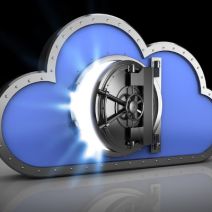 Security is a huge problem for businesses that take advantage of the cloud, but never to the same degree. It’s often the nature of the industry which dictates how much a business should invest in cloud security. However, despite these differences in policy, there are some aspects of cloud security that absolutely can’t be overlooked, including data permissions, account security, vulnerability to malware, and other online issues.
Security is a huge problem for businesses that take advantage of the cloud, but never to the same degree. It’s often the nature of the industry which dictates how much a business should invest in cloud security. However, despite these differences in policy, there are some aspects of cloud security that absolutely can’t be overlooked, including data permissions, account security, vulnerability to malware, and other online issues.
 If you are a technician and a network you are responsible for begins to go down because the traffic that is coming into the network is unusually high, there is a good chance you are experiencing a distributed denial of service attack, or DDoS. These attacks, which are extraordinarily difficult to prevent altogether, can be exceedingly costly for a business.
If you are a technician and a network you are responsible for begins to go down because the traffic that is coming into the network is unusually high, there is a good chance you are experiencing a distributed denial of service attack, or DDoS. These attacks, which are extraordinarily difficult to prevent altogether, can be exceedingly costly for a business.
 Most computer users should practice the policy of ensuring optimal security on their PCs. To this end, assuming that you’ll be hacked (or at least targeted) at some point is pretty reasonable, as it allows you to plan ahead and take preventative actions. Still, there are plenty of people in the world who don’t care enough or worry enough to make security-minded decisions. Contrary to popular belief, there are countless ways that a hacker can take advantage of a hacked PC.
Most computer users should practice the policy of ensuring optimal security on their PCs. To this end, assuming that you’ll be hacked (or at least targeted) at some point is pretty reasonable, as it allows you to plan ahead and take preventative actions. Still, there are plenty of people in the world who don’t care enough or worry enough to make security-minded decisions. Contrary to popular belief, there are countless ways that a hacker can take advantage of a hacked PC.
 Implementing proper IT solutions is challenging for the average SMB, and it’s difficult without the aid of a proper IT department. Organizations that can’t afford a full in-house IT department sometimes resort to less savory methods of managing their technology, which can be dangerous for business continuity, data storage compliance, and security.
Implementing proper IT solutions is challenging for the average SMB, and it’s difficult without the aid of a proper IT department. Organizations that can’t afford a full in-house IT department sometimes resort to less savory methods of managing their technology, which can be dangerous for business continuity, data storage compliance, and security.
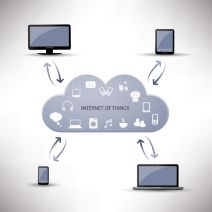 In the near future, there will be many new devices connecting to the Internet. Some will be useful, while others will be… not so much. Either way, the fact remains that, according to IDC, the Global Internet of Things (IoT) spending is expected to reach around $1.3 trillion by 2020. That’s a pretty huge number, and we’ll tell you why your organization needs to keep the IoT in mind when putting thought into your technology strategy.
In the near future, there will be many new devices connecting to the Internet. Some will be useful, while others will be… not so much. Either way, the fact remains that, according to IDC, the Global Internet of Things (IoT) spending is expected to reach around $1.3 trillion by 2020. That’s a pretty huge number, and we’ll tell you why your organization needs to keep the IoT in mind when putting thought into your technology strategy.
 Whenever hackers show themselves, they always spell trouble. Whether it’s stealing credentials or completely taking over someone’s computer, a hacker has a plethora of targets and methods that can be irritating for the average PC user, or business executive. In fact, hackers are so crafty that they can even hack into hospital equipment.
Whenever hackers show themselves, they always spell trouble. Whether it’s stealing credentials or completely taking over someone’s computer, a hacker has a plethora of targets and methods that can be irritating for the average PC user, or business executive. In fact, hackers are so crafty that they can even hack into hospital equipment.
 Email is an aging communication protocol, but it’s still an important asset nonetheless. Even though society continues to push toward bigger and greater things, the modern office still depends on having an email solution for a communication medium. While we can’t get away from email completely, it’s important to make sure that using it is as easy as possible, especially for the busy business owner.
Email is an aging communication protocol, but it’s still an important asset nonetheless. Even though society continues to push toward bigger and greater things, the modern office still depends on having an email solution for a communication medium. While we can’t get away from email completely, it’s important to make sure that using it is as easy as possible, especially for the busy business owner.
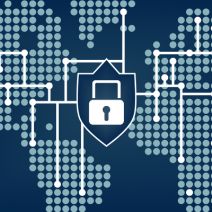 Security is a top priority in today’s business environment, especially following high-profile hacks of notable enterprises. Unfortunately, the fact of the matter is that these hacks could have been prevented if both the employees and employers of these organizations followed strict security best practices for their technology. Thankfully, it doesn’t have to be hard to teach your team how to properly use technology.
Security is a top priority in today’s business environment, especially following high-profile hacks of notable enterprises. Unfortunately, the fact of the matter is that these hacks could have been prevented if both the employees and employers of these organizations followed strict security best practices for their technology. Thankfully, it doesn’t have to be hard to teach your team how to properly use technology.
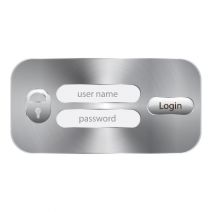 Password security is a common problem that businesses that take their cybersecurity seriously have to deal with on a regular basis. Passwords need to be complex and difficult to guess, but easy to remember at the same time. Unfortunately, these two goals don’t go hand-in-hand, and as such, users often have to sacrifice one for the other. The “passpoem” is a concept born to resolve this issue, though it takes a pretty roundabout path of doing so.
Password security is a common problem that businesses that take their cybersecurity seriously have to deal with on a regular basis. Passwords need to be complex and difficult to guess, but easy to remember at the same time. Unfortunately, these two goals don’t go hand-in-hand, and as such, users often have to sacrifice one for the other. The “passpoem” is a concept born to resolve this issue, though it takes a pretty roundabout path of doing so.
 A recent trend in cybersecurity is the omnipresent threat of ransomware and distributed denial of service attacks (DDoS). With hackers out to get you and your business, you need to stay updated on how to take the fight to these extortion masters. Unfortunately, victims who have become targets of ransomware, DDoS attacks, and other kinds of threatening hacker activity, often feel that “paying the piper” is the best way to resolve the issue. Well, we have news for you: it isn’t.
A recent trend in cybersecurity is the omnipresent threat of ransomware and distributed denial of service attacks (DDoS). With hackers out to get you and your business, you need to stay updated on how to take the fight to these extortion masters. Unfortunately, victims who have become targets of ransomware, DDoS attacks, and other kinds of threatening hacker activity, often feel that “paying the piper” is the best way to resolve the issue. Well, we have news for you: it isn’t.
 A good business practices extreme caution when using the Internet, thanks to hackers using any means possible to unleash threats against organizations of all sizes. You teach your employees how to avoid threats and to avoid suspicious websites, but what if that’s not enough to keep hackers out of your network infrastructure?
A good business practices extreme caution when using the Internet, thanks to hackers using any means possible to unleash threats against organizations of all sizes. You teach your employees how to avoid threats and to avoid suspicious websites, but what if that’s not enough to keep hackers out of your network infrastructure?
 We write about cyber security all of the time, and for good reason. You need to be sure that your organization’s defenses are bulletproof, or at least optimized for maximum security. A recent debacle in the United States serves as a reminder that even high-level, super-secret government accounts can be hacked, like this story from the Central Intelligence Agency (CIA).
We write about cyber security all of the time, and for good reason. You need to be sure that your organization’s defenses are bulletproof, or at least optimized for maximum security. A recent debacle in the United States serves as a reminder that even high-level, super-secret government accounts can be hacked, like this story from the Central Intelligence Agency (CIA).
 With many organizations heavily relying on mobile computing, malicious operators have begun targeting the “low-lying fruit” of a business’ IT infrastructure, which is often a company’s mobile devices. Kemoge, a malicious adware strain designed to corrupt Android mobile operating systems, is the latest mobile threat that your business needs to protect itself against.
With many organizations heavily relying on mobile computing, malicious operators have begun targeting the “low-lying fruit” of a business’ IT infrastructure, which is often a company’s mobile devices. Kemoge, a malicious adware strain designed to corrupt Android mobile operating systems, is the latest mobile threat that your business needs to protect itself against.
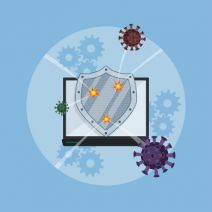 One of the primary threats that business networks are trying to protect themselves from is malware. We’re all aware of how much damage a stray piece of malware can inflict on a business, as they can perform functions like lock down files, steal sensitive data, and distribute crippling viruses. In recent developments, studies are showing that malware is now involved in less than half of all reported hacking attacks, and that more sophisticated measures are now being taken to exploit unwary users.
One of the primary threats that business networks are trying to protect themselves from is malware. We’re all aware of how much damage a stray piece of malware can inflict on a business, as they can perform functions like lock down files, steal sensitive data, and distribute crippling viruses. In recent developments, studies are showing that malware is now involved in less than half of all reported hacking attacks, and that more sophisticated measures are now being taken to exploit unwary users.
 Have you ever wondered what hackers do with all of the data they steal on a regular basis? Sure, they could go public with it like they did with the Ashley Madison and Sony hacks, or they could sell it and make some quick cash. Credentials like passwords, usernames, Social Security numbers, and more, can be sold for top dollar in illegal markets, but how much can your identity go for?
Have you ever wondered what hackers do with all of the data they steal on a regular basis? Sure, they could go public with it like they did with the Ashley Madison and Sony hacks, or they could sell it and make some quick cash. Credentials like passwords, usernames, Social Security numbers, and more, can be sold for top dollar in illegal markets, but how much can your identity go for?
 Malware that targets ATMs isn’t a new concept. After all, ATMs use internal computers that can be hacked just the same as any old workstation. The prime difference is that hacking into an ATM allows for a direct dispensing of cash, rather than some crafty behind-the-scenes action. A new type of ATM malware, titled GreenDispenser, is a cause for concern in Mexico, and could spread to other countries if left unchecked.
Malware that targets ATMs isn’t a new concept. After all, ATMs use internal computers that can be hacked just the same as any old workstation. The prime difference is that hacking into an ATM allows for a direct dispensing of cash, rather than some crafty behind-the-scenes action. A new type of ATM malware, titled GreenDispenser, is a cause for concern in Mexico, and could spread to other countries if left unchecked.
 With the Internet of Things continuing to gain popularity, we’re seeing more devices that connect to the Internet than ever before. However, what the users of these devices might be failing to take into consideration is the fact that the Internet is a dangerous place full of threats and other miscreants. What happens if these criminals decide to attack any of your connected devices? This is a relevant question to ask since October is Cyber Security Month, and The Internet of Things represents the next frontier of cyberspace.
With the Internet of Things continuing to gain popularity, we’re seeing more devices that connect to the Internet than ever before. However, what the users of these devices might be failing to take into consideration is the fact that the Internet is a dangerous place full of threats and other miscreants. What happens if these criminals decide to attack any of your connected devices? This is a relevant question to ask since October is Cyber Security Month, and The Internet of Things represents the next frontier of cyberspace.
 This October is Cybersecurity Month! Some businesses think that they’re immune to hacking attacks because they’re “low profile” compared to huge corporations. However, the truth of the matter is that your organization is just as much at risk as they are. This month, take measures to keep your organization’s data safe, or risk losing everything in the fallout of a hacking attack.
This October is Cybersecurity Month! Some businesses think that they’re immune to hacking attacks because they’re “low profile” compared to huge corporations. However, the truth of the matter is that your organization is just as much at risk as they are. This month, take measures to keep your organization’s data safe, or risk losing everything in the fallout of a hacking attack.
 If you feel that there’s an increase in ransomware activity, don’t worry; it’s not just you. Hackers are now taking greater advantage of ransomware, a threat that locks down files and returns them in exchange for a payment. This is wreaking havoc on the computing world. Even the FBI has acknowledged the threat, and has issued a warning that the most likely type of cyber extortion users will encounter is probably going to be DDoS attacks.
If you feel that there’s an increase in ransomware activity, don’t worry; it’s not just you. Hackers are now taking greater advantage of ransomware, a threat that locks down files and returns them in exchange for a payment. This is wreaking havoc on the computing world. Even the FBI has acknowledged the threat, and has issued a warning that the most likely type of cyber extortion users will encounter is probably going to be DDoS attacks.
 It’s been two years since the world was introduced to CryptoLocker, a particularly-nasty ransomware that encrypts a computer’s data while giving the user a deadline to pay a ransom for the encryption key, or else have their data destroyed. What we’re seeing now is that the reach of CryptoLocker is extending beyond the average PC user; even gamers are getting owned by Cryptolocker.
It’s been two years since the world was introduced to CryptoLocker, a particularly-nasty ransomware that encrypts a computer’s data while giving the user a deadline to pay a ransom for the encryption key, or else have their data destroyed. What we’re seeing now is that the reach of CryptoLocker is extending beyond the average PC user; even gamers are getting owned by Cryptolocker.
 For argument’s sake, do you think society today relies too much on technology? In the Information Age, both businesses and governments have to be more careful than ever about how they approach cybersecurity. However, what would happen if a massive cyber war were to render any and all computing systems in the United States inert? Granted, such a powerful, in-depth attack is unlikely, but it’s sometimes fun (and frightening) to examine the worst-case scenario.
For argument’s sake, do you think society today relies too much on technology? In the Information Age, both businesses and governments have to be more careful than ever about how they approach cybersecurity. However, what would happen if a massive cyber war were to render any and all computing systems in the United States inert? Granted, such a powerful, in-depth attack is unlikely, but it’s sometimes fun (and frightening) to examine the worst-case scenario.
 With plenty of new features to throw around, Windows 10 is shaping up to be quite the operating system. One feature that seems to have fallen off of everybody’s radar (so far) is Windows Hello, a brand new way to authenticate your PC login. By taking advantage of biometric scanning, your computer will let you log in just by looking at your face.
With plenty of new features to throw around, Windows 10 is shaping up to be quite the operating system. One feature that seems to have fallen off of everybody’s radar (so far) is Windows Hello, a brand new way to authenticate your PC login. By taking advantage of biometric scanning, your computer will let you log in just by looking at your face.
 We all know that Windows 10 is the hot new operating system released by Microsoft this past July, with slick new features and (gasp!) the Start menu. We’ve been writing a lot of articles about how great and functional the new operating system is. Keep in mind that Windows 10 is a great operating system, but you should also take note of these four shortcomings when considering whether you should immediately upgrade or not.
We all know that Windows 10 is the hot new operating system released by Microsoft this past July, with slick new features and (gasp!) the Start menu. We’ve been writing a lot of articles about how great and functional the new operating system is. Keep in mind that Windows 10 is a great operating system, but you should also take note of these four shortcomings when considering whether you should immediately upgrade or not.
 Every business executive knows the struggle of employee turnover. Your employees might come and go, but your data is one thing that you can’t afford to lose from your business. You might feel that you can trust all of the employees who have put in years of effort to ensure your organization stays afloat, but you may be surprised to learn that a significant number of them will probably leave your company with at least some corporate data.
Every business executive knows the struggle of employee turnover. Your employees might come and go, but your data is one thing that you can’t afford to lose from your business. You might feel that you can trust all of the employees who have put in years of effort to ensure your organization stays afloat, but you may be surprised to learn that a significant number of them will probably leave your company with at least some corporate data.
 With so much nasty content just begging to get viewed on the Internet, it’s understandable why a content filter needs to be integrated into your company’s web viewing protocol. Still, it should be understood that your content filter isn’t going to keep all questionable content away from prying eyes. Therefore, the only way you can really know with certainty that your Internet users aren’t doing anything sketchy is to actively monitor their activity, and check for any suspicious websites.
With so much nasty content just begging to get viewed on the Internet, it’s understandable why a content filter needs to be integrated into your company’s web viewing protocol. Still, it should be understood that your content filter isn’t going to keep all questionable content away from prying eyes. Therefore, the only way you can really know with certainty that your Internet users aren’t doing anything sketchy is to actively monitor their activity, and check for any suspicious websites.
 With revelations coming to light on how governments are monitoring citizen's Internet usage, many people are concerned about their online privacy. Most of us are so dependent upon technology that it's almost impossible to totally disconnect off the grid, yet there are a few tricks you can use to browse the Web with anonymity.
With revelations coming to light on how governments are monitoring citizen's Internet usage, many people are concerned about their online privacy. Most of us are so dependent upon technology that it's almost impossible to totally disconnect off the grid, yet there are a few tricks you can use to browse the Web with anonymity.
 Since the dawn of the computing age, hackers have taken advantage of all sorts of tactics in order to crack systems and ruin lives. With the Internet of Things bringing connected devices from all over the place into the mix, there are more opportunities than ever to take advantage of unsuspecting users. In fact, even car computers are capable of being hacked.
Since the dawn of the computing age, hackers have taken advantage of all sorts of tactics in order to crack systems and ruin lives. With the Internet of Things bringing connected devices from all over the place into the mix, there are more opportunities than ever to take advantage of unsuspecting users. In fact, even car computers are capable of being hacked.
 Hackers are always coming up with new, unprecedented methods of hacking unsuspecting victims. Despite their best efforts, technology professionals have managed to keep up with threats, but this only forces threats to continue to innovate. In fact, some hackers are even capable of using radio signals to hack into an unconnected device and steal confidential corporate data.
Hackers are always coming up with new, unprecedented methods of hacking unsuspecting victims. Despite their best efforts, technology professionals have managed to keep up with threats, but this only forces threats to continue to innovate. In fact, some hackers are even capable of using radio signals to hack into an unconnected device and steal confidential corporate data.
 In this day and age, a password isn’t enough to keep your accounts secure from attempted hacks. Passwords can be cracked as easily as anything. A lot of businesses have moved to two-factor authentication in order to preserve their data. There are several ways of using this for your business, but a new startup called BioCatch is developing an authentication procedure which looks at your mouse activity.
In this day and age, a password isn’t enough to keep your accounts secure from attempted hacks. Passwords can be cracked as easily as anything. A lot of businesses have moved to two-factor authentication in order to preserve their data. There are several ways of using this for your business, but a new startup called BioCatch is developing an authentication procedure which looks at your mouse activity.
 Network security entails a ton of different procedures, and it can be easy to lose track of what you’ve already implemented, and what still needs to be done. Instead of worrying about keeping your business’s confidential data safe, know with certainty that it’s as secure as possible by following our security checklist.
Network security entails a ton of different procedures, and it can be easy to lose track of what you’ve already implemented, and what still needs to be done. Instead of worrying about keeping your business’s confidential data safe, know with certainty that it’s as secure as possible by following our security checklist.
 Your business is literally assaulted by thousands of threats a day, and they could ruin your organization's goals in an instant if not for your defenses. With such powerful security measures at your disposal, we don’t blame you for lowering your defenses; however, it should be mentioned that your network security doesn’t protect you from all manners of threats. Attacks like phishing scams have a tendency to bypass your security measures, which makes them dangerous.
Your business is literally assaulted by thousands of threats a day, and they could ruin your organization's goals in an instant if not for your defenses. With such powerful security measures at your disposal, we don’t blame you for lowering your defenses; however, it should be mentioned that your network security doesn’t protect you from all manners of threats. Attacks like phishing scams have a tendency to bypass your security measures, which makes them dangerous.
 As a business owner, you’re constantly moving around. At the same time, you’re expected to keep in touch with your base of operations, respond to employee and client inquiries, and many more mission-critical tasks that require the use of remote technology solutions. Unfortunately, public WiFi hotspots are known to be cesspools of online filth, where a secure connection is nothing but a dream. One way to correct this issue is with a Virtual Private Network (VPN).
As a business owner, you’re constantly moving around. At the same time, you’re expected to keep in touch with your base of operations, respond to employee and client inquiries, and many more mission-critical tasks that require the use of remote technology solutions. Unfortunately, public WiFi hotspots are known to be cesspools of online filth, where a secure connection is nothing but a dream. One way to correct this issue is with a Virtual Private Network (VPN).
 It seems like we can’t go on the Internet without reading about some sort of data breach. Sometimes they’re caused by poor security measures, like lack of data encryption or two-factor authentication; other times, it’s because of lackluster password security. Despite the antiquity of the username and password, they’re staples in the modern office. Thus, it’s important that they’re as secure as possible at all times.
It seems like we can’t go on the Internet without reading about some sort of data breach. Sometimes they’re caused by poor security measures, like lack of data encryption or two-factor authentication; other times, it’s because of lackluster password security. Despite the antiquity of the username and password, they’re staples in the modern office. Thus, it’s important that they’re as secure as possible at all times.
 When you think of the Internet of Things, does your mind immediately wander into the realm of connected devices that change the way we interact with each other? Or, does it consider the security issues that can potentially become a threat to your entire network and technology infrastructure? Hopefully it’s a little of both, with an emphasis placed on security.
When you think of the Internet of Things, does your mind immediately wander into the realm of connected devices that change the way we interact with each other? Or, does it consider the security issues that can potentially become a threat to your entire network and technology infrastructure? Hopefully it’s a little of both, with an emphasis placed on security.
 One of the most vital parts of your network security is a firewall. This is generally your first line of defense against the myriad of threats that can be found while online, and are instrumental to comprehensive network security. Despite this common knowledge, some folks might not understand specifically what a firewall does to keep your systems safe.
One of the most vital parts of your network security is a firewall. This is generally your first line of defense against the myriad of threats that can be found while online, and are instrumental to comprehensive network security. Despite this common knowledge, some folks might not understand specifically what a firewall does to keep your systems safe.
 Normally in cybersecurity, we hear about hacking attacks and immediately sympathize with the victim. It’s usually an individual or a business that suffers the most; yet, a recent trend is showing that hackers are lashing out at one another in response to certain threats. In response to a hack from the cyberespionage group Naikon, another group, Hellsing, retaliated with their own attack.
Normally in cybersecurity, we hear about hacking attacks and immediately sympathize with the victim. It’s usually an individual or a business that suffers the most; yet, a recent trend is showing that hackers are lashing out at one another in response to certain threats. In response to a hack from the cyberespionage group Naikon, another group, Hellsing, retaliated with their own attack.
 When your website has content or makes changes to its existing content, it can be of great benefit to your business’s marketing endeavors. In fact, it’s so important that innovators and programmers have built software that’s designed to perform the act of content writing. In other words, there are robots that compose web content. How does the writing of a robot hold up to that which is written by a human?
When your website has content or makes changes to its existing content, it can be of great benefit to your business’s marketing endeavors. In fact, it’s so important that innovators and programmers have built software that’s designed to perform the act of content writing. In other words, there are robots that compose web content. How does the writing of a robot hold up to that which is written by a human?
 Just like Silk Road (the illegal online black market designed to smuggle drugs around the world), there exists an online trade for zero-day exploits. Unsurprisingly, hackers find it exceptionally lucrative to sell these exploits for profit. Now, there’s a new marketplace where hackers can get their hands on these vulnerabilities, and it’s all thanks to the anonymity of the Darknet.
Just like Silk Road (the illegal online black market designed to smuggle drugs around the world), there exists an online trade for zero-day exploits. Unsurprisingly, hackers find it exceptionally lucrative to sell these exploits for profit. Now, there’s a new marketplace where hackers can get their hands on these vulnerabilities, and it’s all thanks to the anonymity of the Darknet.
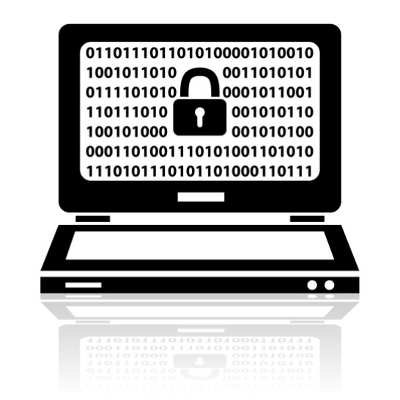 Arguably one of the most imperative assets for any government is an IT infrastructure, and in 2015, the U.S. government is realizing that security breaches are some of the most dangerous cyber threats to watch out for. As evidenced by the U.S. Department of Homeland Security, IT security is just as important as other matters of national security.
Arguably one of the most imperative assets for any government is an IT infrastructure, and in 2015, the U.S. government is realizing that security breaches are some of the most dangerous cyber threats to watch out for. As evidenced by the U.S. Department of Homeland Security, IT security is just as important as other matters of national security.
 A trend that’s taking the office by storm is BYOD, or Bring Your Own Device. These policies entail workers bringing their own devices to the office and using them for work-related purposes. While this opens up many avenues for enhanced productivity and efficiency, being too laissez faire with your BYOD policy could instigate some problems later on, primarily in the security field.
A trend that’s taking the office by storm is BYOD, or Bring Your Own Device. These policies entail workers bringing their own devices to the office and using them for work-related purposes. While this opens up many avenues for enhanced productivity and efficiency, being too laissez faire with your BYOD policy could instigate some problems later on, primarily in the security field.
 When a company is lax about their network security, this can lead to countless threats swarming the network and invading your systems. Yet, sometimes the most dangerous threats come from within. A common issue comes from employees accessing undisclosed files unintentionally and deleting them, which can cause more damage than you think.
When a company is lax about their network security, this can lead to countless threats swarming the network and invading your systems. Yet, sometimes the most dangerous threats come from within. A common issue comes from employees accessing undisclosed files unintentionally and deleting them, which can cause more damage than you think.

















